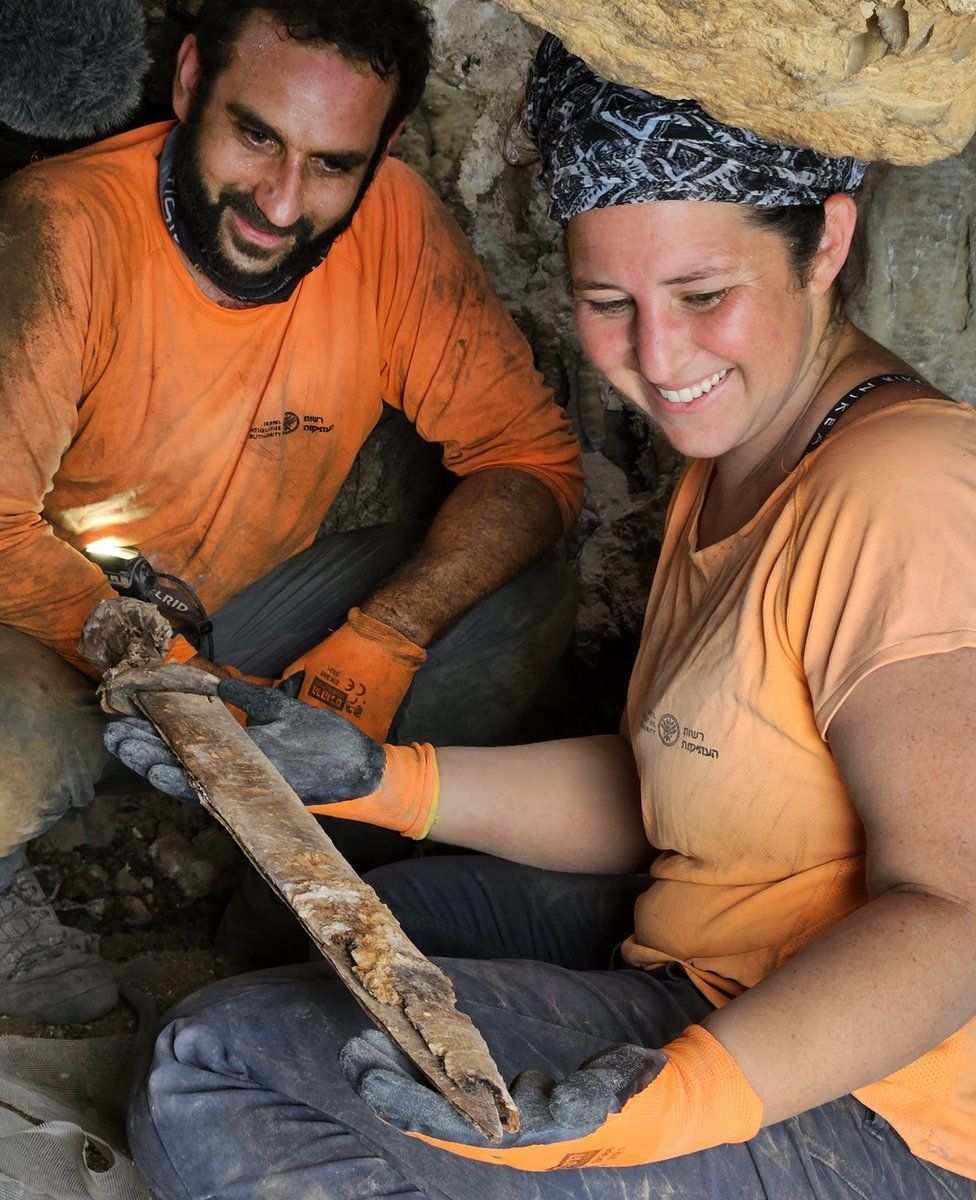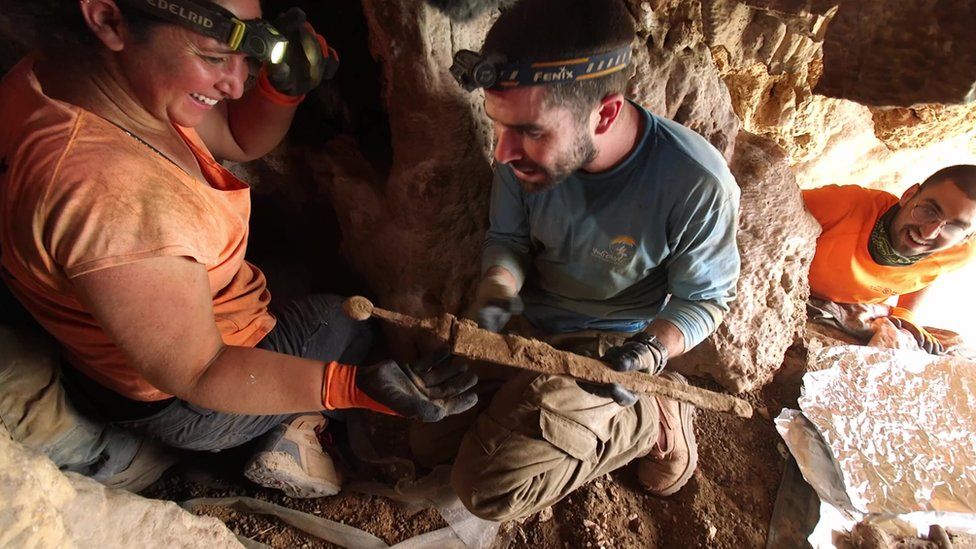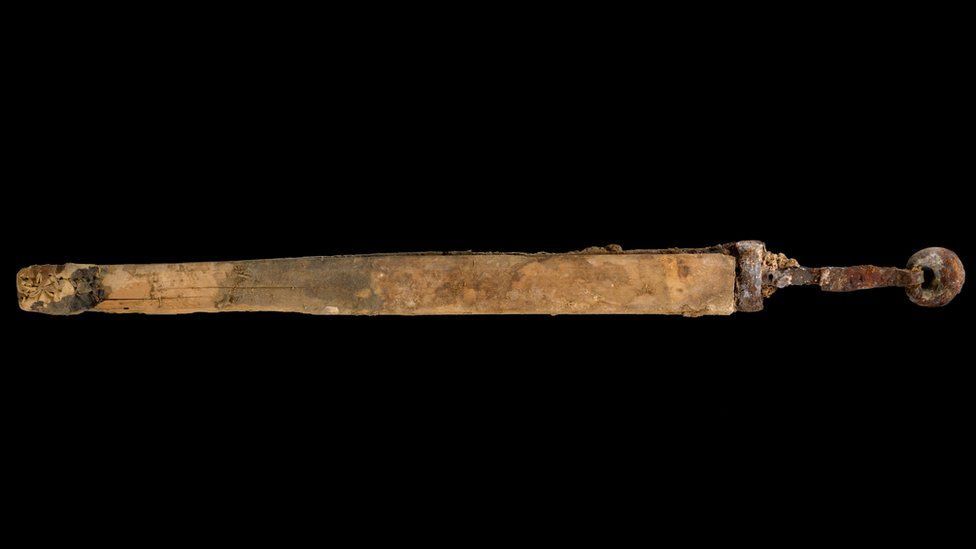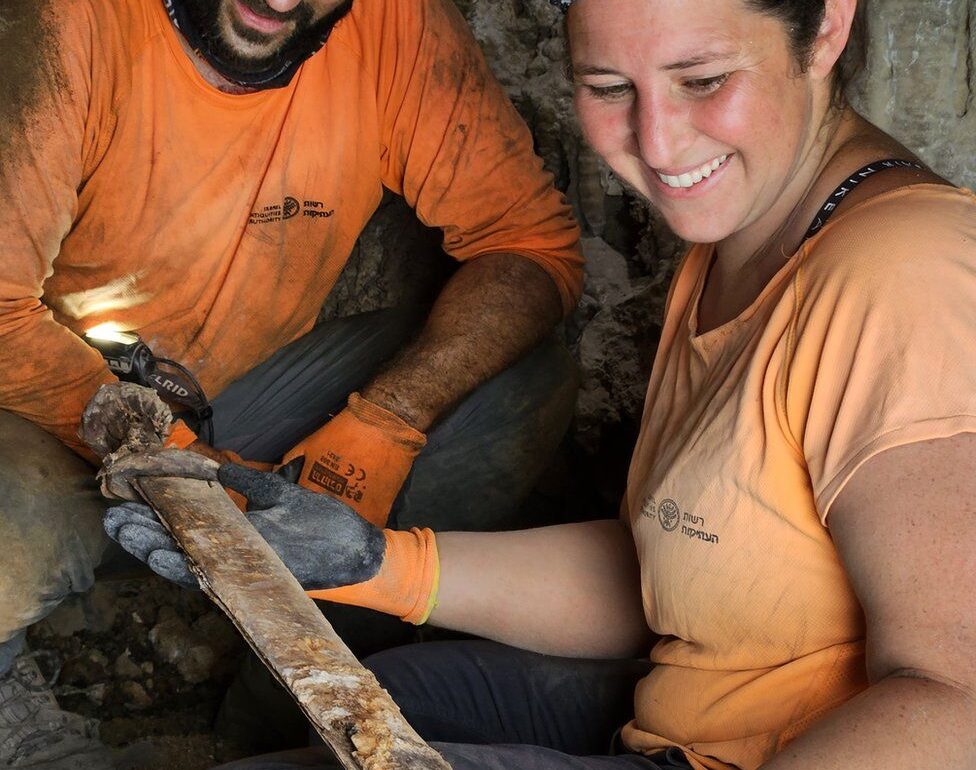
A cache of four excellently-preserved Roman swords and a javelin have been discovered by Israeli researchers in a cave overlooking the Dead Sea.
Three of the 1,900-year-old weapons, whose iron blades are 60-65cm long (24-26in), were still in wooden scabbards.
They were found in a near-inaccessible crevice by a team photographing an ancient inscription on a stalactite.
Archaeologists believe the swords were hidden by Judean rebels after they were seized from the Roman army as booty.
“This is a dramatic and exciting discovery, touching on a specific moment in time,” Eli Escusido, director of the Israel Antiquities Authority (IAA), said in a statement.
Mr Escusido explained that dry desert climate around the Dead Sea enabled the preservation of artefacts that would not survive elsewhere in Israel.
“This is a unique time capsule, whereby fragments of scrolls, coins from the Jewish Revolt, leather sandals, and now even swords in their scabbards, sharp as if they had only just been hidden away today.”

Fifty years ago, a stalactite with an incomplete ink inscription written in ancient Hebrew script was found in a small cave high on a cliff above the Dead Sea, north of the En Gedi oasis in eastern Israel.
Archaeologist Dr Asaf Gayer of Ariel University, geologist Boaz Langford of the Hebrew University of Jerusalem, and photographer Shai Halevi of the IAA recently went to the cave with the aim of using multispectral photography to decipher parts of the inscription not visible to the naked eye.
While on the upper level of the cave, Dr Gayer spotted an extremely well-preserved Roman pilum, or javelin, in a deep, narrow crevice. He also found worked wood in an adjacent niche that turned out to be parts of the swords’ scabbards.
The researchers reported the discovery and then returned with another team to carry out a survey of all the crevices in the cave, during which the four swords were uncovered.




The three swords that were still in their wooden scabbards were identified as Roman spatha, or long swords, while the fourth, shorter weapon was identified as a ring-pommel sword.
They had well-fashioned handles made of wood or metal.
Leather strips and pieces of wood and metal belonging to the them were also found.




Archaeologists say the hiding of the swords and pilum in the cave suggests that the weapons were taken by Judean rebels from Roman soldiers as booty or from the battlefield.
They were then purposefully hidden for reuse, possibly during the second major Jewish revolt against the Roman Empire in Judea – the Bar Kochba Revolt (132AD-135AD).
“Obviously, the rebels did not want to be caught by the Roman authorities carrying these weapons,” said Dr Eitan Klein, one of the directors of the Judean Desert Survey Project.
“We are just beginning the research on the cave and the weapon cache discovered in it, aiming to try to find out who owned the swords, and where, when, and by whom they were manufactured.”
Related Topics
This post was originally published on this site be sure to check out more of their content.









